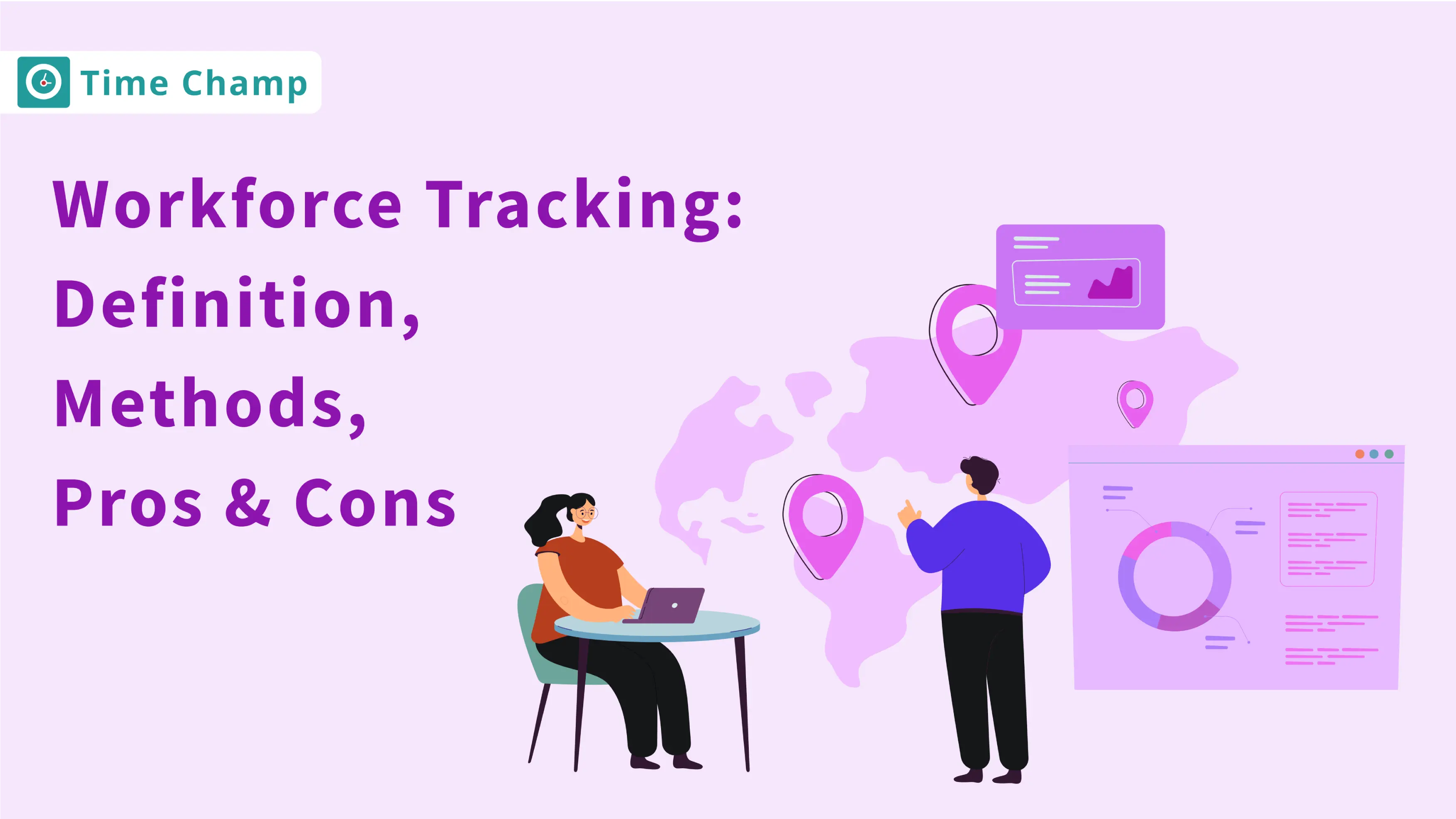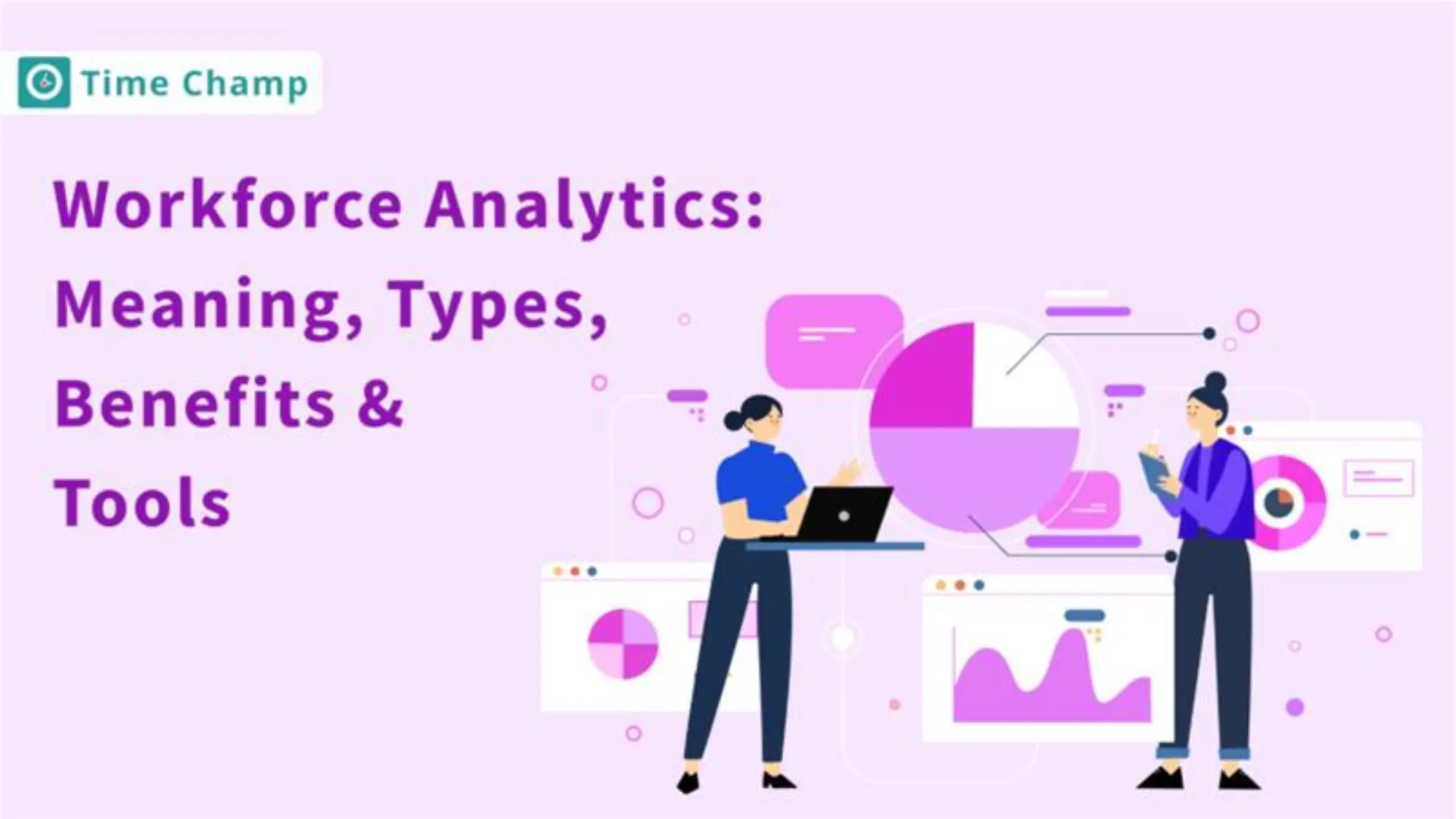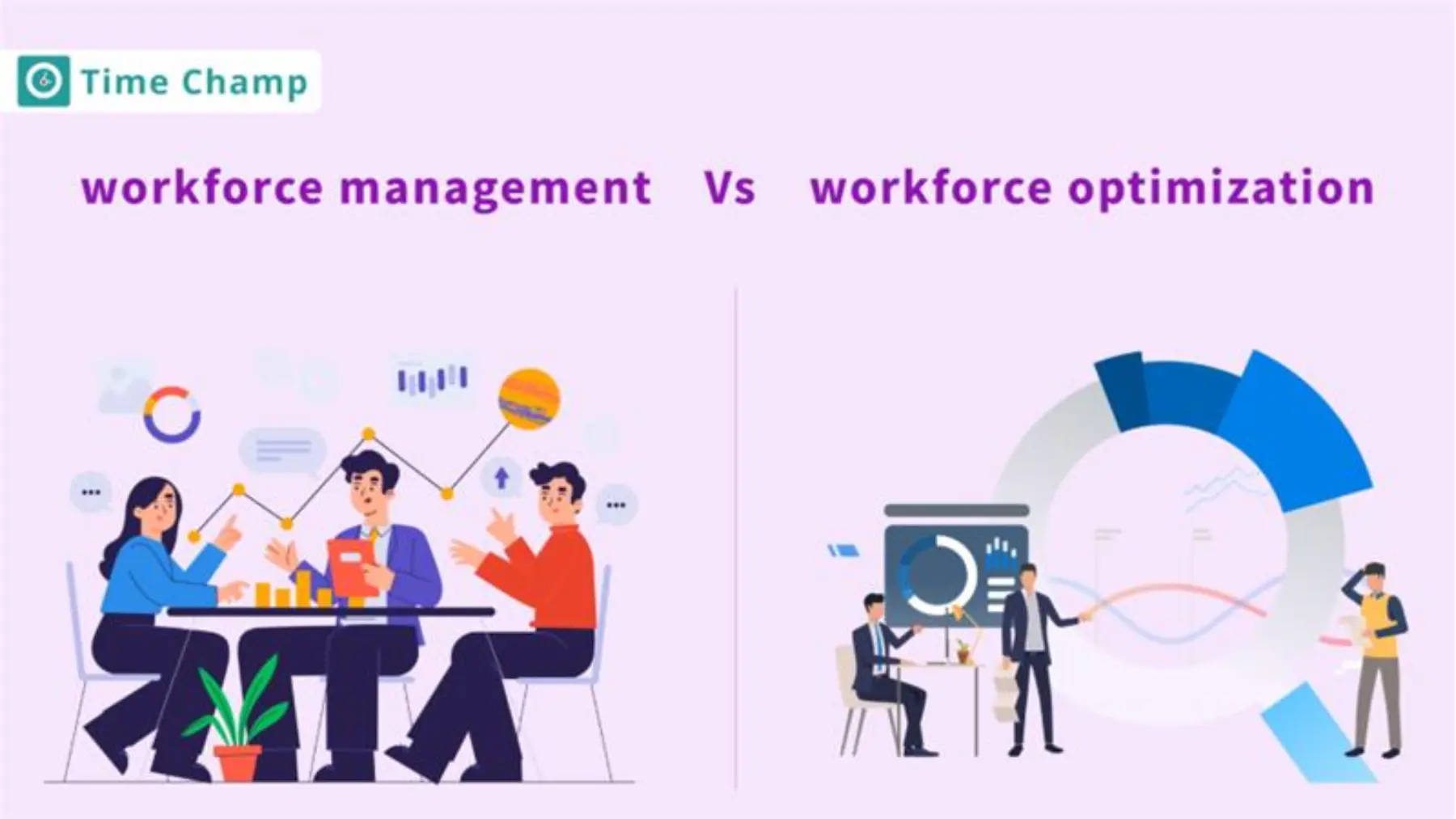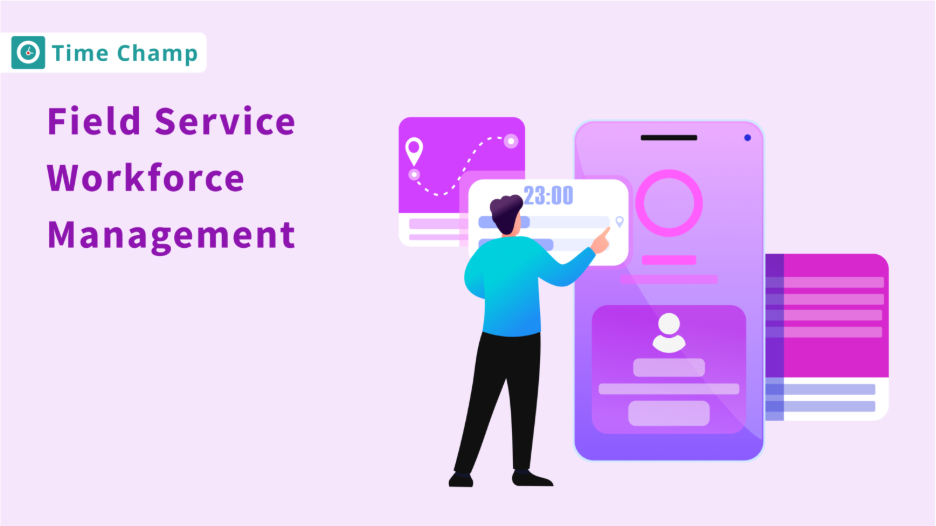Managing a dispersed workforce is not an easy task. Without proper tracking, businesses struggle with unclear productivity levels, missed deadlines, and inefficient resource allocation. These gaps not only drain performance but also inflate costs and reduce accountability across teams. Workforce tracking offers a clear path forward, bringing visibility, structure, and smarter decision-making. In this article, you can explore how it works and why it matters.
What Is Workforce Tracking?
Workforce tracking is the process of monitoring employee activities, attendance, performance, and location through digital tools or software. It provides real-time insights that help organisations optimise productivity, improve accountability, and ensure resources are being used effectively.
Workforce tracking can help managers find patterns, eliminate inefficiencies, and plan work more effectively by providing visibility into how employees spend their time and accomplish tasks. It empowers businesses to make data-driven decisions that enhance team coordination and operational efficiency .
Beyond monitoring, modern workforce tracking aims at developing a balance between productivity and employee well-being. It builds trust, compliance, and promotes smarter management practices that benefit employers and employees through clear policies and appropriate technology.
Why Is Workforce Tracking Important?
Workforce tracking isn’t just about recording hours; it’s about understanding how teams work, where time goes, and how effort translates into results. When done right, it gives clarity for both managers and employees while building a more organised workflow.
1. Improves Accountability
With workforce tracking, everyone’s roles and tasks are clearly visible. This makes it easier to know who is responsible for what, removing confusion or blame. Employees become more responsible because they see how their work contributes to the bigger picture. At the same time, managers get clear insights to guide their teams, instead of relying on assumptions.
2. Saves Time and Costs
Efficient labour tracking doesn’t just tidy up schedules; it uncovers where money quietly slips away. Businesses using workforce tracking software are able to reduce labour costs by up to 36% over three years, simply by aligning staffing with demand and cutting excess overtime. These savings lead to smoother operations and better control over budgets.
3. Boosts Productivity
Workforce tracking software highlights how work actually flows, making it easier to spot delays, overlapping tasks, or idle time. It allows managers to intervene early before the bottlenecks appear and gives employees a well-organised system to assist them in remaining focused and completing tasks more quickly.
4. Enhances Transparency
When hours and output are recorded clearly, trust grows on both sides. Employees feel that their contribution is valued, while managers rely on real data instead of rough estimates. This opens up the lines of communication and reduces the chances of misunderstanding in terms of performance or attendance.
5. Supports Smarter Decisions
With reliable data in hand, leaders can plan ahead with confidence. The workforce tracking software provides information that aids in distributing workloads equally, forecasting staffing demands, and establishing possible deadlines. Instead of reacting to problems, businesses can make proactive choices that drive growth.
What Are the Methods of Workforce Tracking?
Workforce tracking can be done in many ways, depending on how a business operates and where its employees work. Some methods focus on time, others on location or performance. Here are the most common approaches companies use today:
1. Manual Timesheets
The oldest and most straightforward method, where employees record their hours on paper or spreadsheets. While easy to start, it relies heavily on trust and accuracy. Small errors, whether accidental or intentional, can pile up, leading to payroll mismatches or uneven workloads. It works for very small teams but becomes difficult to manage as a business grows.
2. Biometric Systems
Biometric tracking refers to the attendance check using face scans, ID badges, or fingerprints. This will remove concerns such as buddy punching, where another employee logs work on behalf of another employee. It gives companies highly accurate entry and exits records, making payroll more reliable. However, it requires investment in devices and proper handling of sensitive employee data.
3. GPS-Based Tracking
Ideal for salespeople, delivery agents, or service teams, GPS-based workforce monitoring shows where employees are during work hours. Managers can allocate jobs according to employees’ current location, minimise unnecessary movement and ensure accountability for time spent on-site. For employees, it gives clarity, as their movements are documented without constant check-ins or calls.
4. Automated Time Tracking Software
Workforce tracking software automatically records employee attendance, breaks, and work hours. Instead of relying on manual entries, employees continue with their tasks while the system quietly captures data in the background. Managers gain accurate insights into productivity patterns, project schedules, and utilisation of resources, and employees no longer waste their time completing timesheets.
A good example is Time Champ , which not only tracks time but also provides detailed analytics on how work hours are spent. It helps spot patterns, highlight areas for improvement, and ensure fair recognition of employee efforts. With features like project tracking, idle time analysis, and productivity reports , Time Champ makes workforce monitoring simple, reliable, and transparent.
5. IoT and Smart Devices
In industries like logistics, construction, or manufacturing, smart devices and sensors play a key role in workforce tracking. They can monitor equipment usage, worker presence on-site, or even safety compliance. When physical tracking is linked with real-time information, companies can have complete visibility of their operations, optimise efficiency, and create safer work environments.
How to Implement Workforce Tracking Effectively?
Most companies collect workforce information, but only a small percentage turn it into real-time insights. In fact, 83% of organisations collect workforce information, yet just 11% access it instantly, showing a major gap between tracking and action. To bridge this gap, workforce tracking needs to be implemented thoughtfully, with clear steps that make the data useful and actionable.
1. Define Clear Goals and Success Measures
Decide what you want to solve: reduce overtime , raise billable time, improve schedule accuracy, or cut admin work. Turn each aim into a measurable metric (e.g., overtime hours per week, billable % by project, and payroll errors per month). Having specific targets makes choices and results better.
2. Choose the Right Tools
Choose tools that fit your team’s needs, like automatic timers and project tags for office teams, GPS for field staff , biometric or badge systems for on-site crews, and payroll integrations to simplify salary processing. Find tools that can export clean reports so you can compare before/after performance without having to clean up the reports manually. Use workforce tracking software to solve real problems, not just because it’s popular.
3. Create Clear Policies
Write clear rules that state what will be followed, why it is needed, who will be allowed to access the data and how long the data will be kept. Share the purpose openly and outline safeguards like limited access or data retention policies to build trust.
4. Train Your Team
Run focused training sessions that show routines and common scenarios (how to clock in/out, correct project tagging, who to contact for issues). Provide employees with clear guidelines and hands-on practice so they feel confident using the system, which works better than strict enforcement. Employees learn more quickly when leaders lead by example.
5. Focus on Integration
Link workforce tracking with payroll, project management, and scheduling tools so data moves automatically. This removes the need for manual timesheets, reduces admin work, and lowers errors. The easier the process is, the more likely the data will be correct and reliable.
6. Review Data Regularly
Review workforce data on a set schedule, such as weekly to fix small issues quickly and monthly to spot long-term patterns. Watch overtime spikes, low billable ratios, or recurring idle time , and turn insights into actions (reassign tasks, adjust schedules, or provide training). Share high-level findings with teams so workforce tracking becomes a tool for improvement, not surveillance.
What Are the Benefits of Workforce Tracking?
Workforce monitoring goes beyond recording hours; it builds a fair system that benefits both sides. Here are the benefits for employees and employers.
For Employers
1. Better Workforce Visibility
Workforce monitoring provides managers with transparency into who is working and what tasks or projects are in progress. This real-time visibility reduces uncertainty, eliminates the need for constant check-ins, and allows leaders to focus on strategic decisions rather than daily guesswork.
2. Cost and Resource Control
Through precise labour tracking, businesses can identify where time and resources are being wasted. This helps reduce unnecessary overtime, avoid payroll errors, and allocate staff more effectively. With reduced inefficiencies and budget control, firms can do more without the extra costs.
3. Improves Compliance
Accurate records from workforce tracking software make it easier to comply with labour regulations and wage laws. Employers have clear documentation of hours worked, overtime and breaks, reducing the risk of legal disputes. It also builds trust by ensuring payroll is fair and transparent.
4. Smarter Workforce Planning
Data collected from workforce tracking tools gives information about productivity patterns, employee performance , and project timeframes. In turn, employers can use that data to fairly divide workload, forecast staffing needs, and produce realistic schedules. More effective planning results in smoother operation and better outcomes.
For Employees
1. Fair Recognition
With proper workforce tracking, employees get credit for the exact hours and contributions they make. This helps to minimise disputes around attendance or overtime, and they are paid correctly. Recognition of effort also motivates employees to stay consistent and engaged in their roles.
2. Clear Expectations
Transparent schedules and task assignments remove confusion about responsibilities. Employees know what’s expected of them, making it easier to set priorities and stay organised. Clarity reduces stress and allows teams to focus on delivering results.
3. Balanced Workload
Workforce monitoring reveals that some employees are overloaded while others have room to take on more. When managers redistribute work fairly in the workplace, they can prevent employee burnout and maintain output and performance levels. Balanced workflows can increase productivity by up to 44%, showing that managing workload well is important for better performance.
4. Better Growth Opportunities
Tracking tools show patterns in performance and productivity, helping employees identify where they excel and where improvement is needed. This enables future opportunities, training, and promotions. Receiving consistent feedback helps employees advance their skills and abilities, which subsequently helps them advance to career opportunities.
What Are the Challenges of Workforce Tracking?
Below are some of the main challenges businesses face with workforce tracking, and why managing them carefully is important for long-term success.
1. Privacy Concerns
One of the biggest worries regarding workforce tracking is how much data is collected and who has access to it. Employees may feel uneasy if monitoring feels invasive or unclear. Without strong policies and transparent communication, tracking can lead to mistrust instead of collaboration.
2. Employee Resistance
Not everyone welcomes new tracking systems right away. Some may see it as micromanagement or a lack of trust, which can lower morale. The best solution to this is to clarify the purpose and demonstrate how this system is advantageous both to the business and the employees.
3. Implementation Costs
Implementing a workforce tracking program, GPS, or other smart products demands an investment in both technology and training. This may initially seem daunting to small businesses. However, when chosen wisely and implemented step by step, the long-term efficiency often outweighs the initial cost.
4. Data Overload
Modern tracking tools generate a large amount of information. If this data isn’t analysed properly, it can overwhelm managers instead of helping them. Companies need the right reporting features and clear goals to turn raw data into useful insights.
5. Legal and Compliance Issues
Different regions have different rules about employee tracking, data storage, and consent. Failing to follow these can result in fines or disputes. Businesses must ensure their workforce tracking system complies with labour laws and data protection regulations .
Conclusion
When workforce tracking is applied thoughtfully, it goes beyond recording hours and helps strengthen teams while guiding smarter decisions. With the right balance of transparency, technology, and trust, organisations can boost efficiency while employees gain clarity and recognition. The result is a workplace where productivity and people grow together.
Frequently Asked Questions
Yes. Workforce tracking provides insights into task progress, time allocation, and performance trends, helping managers optimise workloads and remove bottlenecks. Employees benefit from clearer expectations and recognition, which boosts engagement and motivation.
Not exactly. Workforce tracking focuses on capturing work-related data like hours, task progress, and project status to improve productivity and planning. Employee monitoring may include a broader surveillance that can encompass the behaviour of that employee and thus becomes more invasive without proper handling.
Workforce tracking provides visibility into distributed teams, allowing managers to see who is working, what tasks are being completed, and project timelines. This provides accountability, balances workloads and makes it easier to work with employees even when they are not at the office.
Workforce management systems that combine GPS tracking, real-time reporting, task management, and automated time logging are ideal. Popular solutions include Time Champ, Deputy, TSheets (QuickBooks Time), and Hubstaff, as they provide accurate data while remaining user-friendly for remote and field employees.









